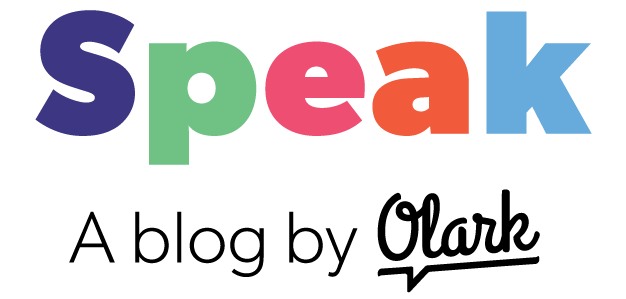I’ll never forget the second day of my first remote job. The first day was the usual — signing all the things, attending all the things, logging into all the things. But when the second day arrived, I had no idea what to do.
I was used to an office job and a structured 9–6 schedule. I’d drive to work, check in with my manager and team, and make a visit (or six) to the communal coffeepot. I’d have lunch around noon, usually with a few folks on my team, and then I’d huddle in a windowless office for the rest of the day. My time was accounted for, everything was in person, and I never second-guessed the routine.
Now, I was sitting at my kitchen table, feeling more unsure than I had since the first day of my very first paying job. Weird thoughts crept in — Do I need to tell someone if I’m going for a walk? Should I ask permission before I take a break to make breakfast? If I hear the ding of the washing machine informing me, hey, it’s time to put your clothes in the dryer — is that cool? And why am I being so paranoid, anyway?
I eventually settled in, and in retrospect, I can laugh at my second-day freakout. But I also feel for my slightly-younger self — and for my employer at the time. The shift from an in-house job to remote work is quite frankly, pretty weird, and onboarding a new remote employee requires a different, not-always-obvious approach. There’s a lot of room for mistakes, misunderstandings, and existential crises.
The shift from an in-house job to remote work is quite frankly, pretty weird, and onboarding a new remote employee requires a different, not-always-obvious approach.
Rethinking remote onboarding
For someone new to remote work, the first few weeks are going to be a bit of a culture shock. Even a seasoned remote employee will probably stumble around a little as they’re learning new tools, etc. So, when I started thinking about Olark’s onboarding process, my challenge was (and is) to address any awkwardness and uncertainty head-on, assure everyone that those feelings are normal, and ease new hires into the remote routine in a fun, human way.
My first piece of advice for any onboarding lead is simply to overcommunicate. Communication is important in an office environment, too, but it’s absolutely critical when you’re remote, and even more so if the employee you’re onboarding is new to remote work. Start by checking in with the new hire daily, and keep talking on a regular schedule for at least the first month. Set up recurring calls. Ping them in Slack (or whatever chat tool you use) just to say hi. If you feel like you’re bugging them a little too much, you’re doing it right.
Start by checking in with the new hire daily, and keep talking on a regular schedule for at least the first month. If you feel like you’re bugging them a little too much, you’re doing it right.
Over the course of a new hire’s first few weeks, I make a point to ask the following questions, repeatedly, through various channels (video calls, Slack messages, structured surveys, etc.):
How are you doing? Simple — and very effective for flagging small problems before they get bigger. The only problem with this question is that it tends to elicit a vague response. If the new hire is “doing pretty good” for days on end, try being more specific: How are you feeling about your schedule? Your workload? Are you happy with your home office setup or coworking space? How did your meeting with [employee] go?
Have you had lunch? Or breakfast? Did you get out for a walk this morning? You can tweak these questions, of course; the point is to reinforce that yes, their schedule is flexible, and no, they don’t need permission to eat, take the dog out, etc. If their responses amount to “I walked to the mailbox and ate a cracker”, remind them that work (including the overwhelming number of things they’re learning and absorbing in their first few weeks) will always be there, and that you want them to establish a sustainable rhythm for the long term.
How can we make this onboarding process better? Once the new hire has a week or two under their belt, start asking for their feedback. What’s been easy, helpful, or otherwise positive? Where have they gotten stuck? Show them that you want to keep improving, and get them engaged in brainstorming and making changes — this openness goes a long way toward smoothing over any bumps they’ve encountered, not to mention toward eliminating those bumps for your next hire.
In addition to overcommunicating (and then overcommunicating some more), there are a few best practices that I’ve integrated into Olark’s onboarding process over the past three years. Some of them might seem obvious, while others are less intuitive, but they’ve all made our onboarding much smoother:
If you work remotely, onboard remotely. When I started working at Olark, our hiring and onboarding processes still included some in-person time. But that ultimately felt disingenuous; if we were really going to commit to being a fully remote company, we needed to be able to hire and onboard remotely, too. And, practically speaking, onboarding in person just wasn’t that effective. The new hire got into a short-term rhythm of in-person interactions, and then needed just as much adjustment time to establish a remote routine once their onboarding period ended.
So, as with our hiring process, we took onboarding from in-person to remote — and I’d encourage other remote teams to do the same. Getting a new hire familiar with your company’s day-to-day operations is a big part of onboarding, and you can’t accomplish that if you onboard in an environment that’s significantly different from the one they’ll actually be working in.
Getting a new hire familiar with your company’s day-to-day operations is a big part of onboarding, and you can’t accomplish that if you onboard in an environment that’s significantly different from the one they’ll actually be working in.
Create an onboarding plan. What meetings does the new hire need to attend? Who do they need to talk to, both within and outside of their direct team? What fun activities can they get involved with? What information should they review?
Write up a list of action items for at least their first two weeks. Then, go ahead and schedule a week’s worth of meetings and heads-down time on their calendar, so they can focus on ramping up without worrying about how to fit everything in.

Designate a point person. Think of the point person as playing a similar role to a friendly neighbor or officemate in an in-person workplace. They’re there to make sure the new hire feels welcome and supported; they don’t need to have all the answers, but they do need to provide context, suggest resources, and steer the new hire in the right direction on everything from vacation policies to backend bugs. They also need to be available just to chat, especially if the new hire is frustrated, confused, or otherwise in need of a good ear.
It usually makes sense for the point person to be someone from the new hire’s immediate team, but you can appoint anyone who knows the ropes, as long as they’re excited about welcoming a new addition to the company.
Introduce new hires publicly. Here’s a personal story for you. I had just landed a super exciting freelancing gig, and the timing was perfect — the team was about to hold their annual summit, which meant I’d have a great opportunity to dive in, meet everyone, and start planning the year ahead. On the first day of the summit, my manager kicked things off by introducing all the new hires…except me.
Granted, I was dialing in, and the rest of the team was meeting in person. But they’d hired me to work remotely, and they knew I was on the phone. I was left wondering how folks outside my immediate team would even know that I existed. Was I going to have to introduce myself to everyone individually? I vowed then and there that I’d never allow a new hire to feel that feeling.
I like to use as many channels as possible to introduce new hires (again, overcommunication), including a company-wide email announcement, messages in our company-wide Slack channel, and live intros on as many video calls as possible. I also create a dedicated “welcome” channel in Slack for each new hire, where other team members can introduce themselves and answer questions.
Spend time on tools. Most remote team rely heavily on technology to communicate — and if a new hire isn’t comfortable with your instant messaging, videoconferencing, or project management software, they’re going to have a hard time asking for help. That means that demoing tools and answering questions should be one of your very first onboarding action items.
Even if the hire has experience with Slack, Zoom, Trello, etc., take ten minutes to check that their accounts are set up correctly. You should also familiarize new hires with any tool-related norms that might be specific to your company. For example, should they set their Slack status to “away” when they go to lunch? Should they mute their audio on group video calls, and is it okay to turn off video if they’re having a bad hair day?
Familiarize new hires with your company’s specific tool-related norms. Should they set their Slack status to “away” when they go to lunch? Is it okay to turn off video on calls if they’re having a bad hair day?
Introduce culture early. Given everything else a new hire has to absorb, explaining your company’s history and values might not seem urgent. But I’ve found that a high-level orientation in the first week or two is incredibly valuable — especially if an employee is new to remote work and anxious about building connections to their teammates.
One thing I love about our founders is their unwavering dedication to our co-created culture. As such, they play an important part in our onboarding process — specifically, they give new hires a deep dive into why they built Olark, what they value in business, how our culture has evolved, etc. They are dedicated to making sure the new hire feels welcomed, and they’re able to provide some historical context for our values and processes. Win win.
New Olarkers almost always come away from those conversations motivated, excited to contribute, and grounded in a clear understanding of why we built Olark and where we want to take the company from here.
One final note: if you’re onboarding remote employees, make sure you’re putting yourself in their shoes. You’ve been a new employee before, and possibly even a new remote employee. What resources were most useful? What do you wish you’d known or done earlier? Ask yourself how you can provide those things for new hires at your company — maybe there are recorded presentations they can watch, Slack channels they should join, or opportunities to share something they’re passionate about with the wider team.
Experiment, overcommunicate, and iterate from there. And let me know what you learn — because even after dozens of remote hires, I’m still tweaking my process, too! You can share your tips and questions in a comment on this post, or reach out to me through Olark’s Facebook, Twitter, or LinkedIn.

